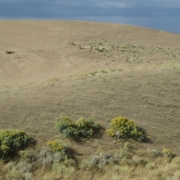Water Data and Science Committee Meeting Summary July 30, 2020 Webinar–Greg McCabe, US Geological Survey; Delaware River Basin PaleoDrought
- Call to Order—Chair Amy Shallcross DRBC called to order at 2:03 Central time
- Introductions of Participants on the call-Amy Shallcross, Chair, Sue Lowry, Tom Littlepage, Brian Atkins, Adel Abdullah, Shawn Jackson, Mike Robertson, Joy Loughry, Christopher Estes, Matt Unruh, David Wolock, Greg McCabe
- Presentation by Greg McCabe-USGS IWAA’s in Delaware River Basin—Greg’s full presentation can be found here. Hydroclimatic drought and Paleo studies.
The research Greg will highlight today was done as part of the Delaware River basin IWAA work and they looked at instrumented period—1901 to 2015. Wanted to compare this instrumented period with the variability in climate over a longer period of time. Used PRISM data. Compared modeled to measured data in 13 sub-basins to compare runoff of modeled to measured. Water balance model had good correlation. Definition of drought is the one used by BoR in the Secure Water Act report. Had several criteria to identify historic droughts. In the Delaware, it appears that all of basin is dry or wet; it’s a very homogeneous basin. Identified 7 droughts which met the criteria during the instrumented period. Longest was 13 years. Driest was 1962-1970. 6 of 7 occurred prior to 1970. This apparent change in hydrology around 1970 is common across the eastern US. Precipitation much better correlation than temperature as drought indicator. Paleo—research has found summer Palmer Drought Summer (PDSI) Index relates best to tree ring growth. Were able to re-construct back to 500 CE. 75 droughts identified back to year 500. Droughts ranged in duration from 4 to 27 years. Some historical drier than in the instrumented period. Compared centuries by frequency, duration and severity. Greg alerted the group to keep an eye out for the release of the Secure Water 2021 Report as it will contain information related to today’s presentation. He also suggested doing a search on “Living Blended Drought Atlas” for those interested in other paleo research. Adel shared the site: www.paleoflow.org as another resources.
- All-committee webinar on July 13—Water Planning Committee on FEMA pre-disaster funding programs—any follow-up for this committee. One topic raised during the all committee webinar is FEMA ‘s (and perhaps other federal agencies) reluctance or inability to allow current/forecast estimates for extreme precipitation events to be utilized under federal infrastructure program. The older volumes of Atlas 14 coverages for the US are becoming quite dated and don’t reflect the true recurrence intervals or maximum storm events possible and that should be planned for.
- WD&S panel for October 2020 Virtual Annual Meeting– Amy and Sue presented an outline of the speakers the Annual Meeting Planning group had in the draft agenda, which included leadership from the USGS Water Mission Area and Mapping sections; NIDIS update and NWS update. Discussion was held that these high-level updates are informative and good, but it might be desirable to also add a few states’ perspective on the impacts of the federal programs. Maybe some of the states that have received multiple WUDR grants could be asked to provide a summary and participate on a panel. Covering any planned improvements to the Drought Impacts Reporter was also mentioned.
- Workplan development for the Committee
- Workplan list review—changes in priority items made based on progress made and topics covered recently
- Choose 1-3 topics to develop Statements of Principles
- Streamgaging—Amy will develop draft
- Extreme Events—Atlas 14; NWM—Amy will develop draft
- Drought NIDIS and NDRP—Tom Littlepage will develop draft
- Other items for the Committee’s consideration
- Support for NOAA-NWS Atlas 14
- Supporting NHD Plus and other mapping efforts
- Next call or webinar—The committee will be invited to the WUDR Forum webinar at 1 p.m. Central time on Wed. 8/26; then WD&S committee will meet separately at 2:30 p.m. Central time later that same day.
Water Data and Science Committee: Mission is to educate ICWP members on current data and science trends and to advocate support for data and science programs at the national level.
Issues for 2020 Workplan
- Potential ICWP Support of USGS Efforts
- USGS NGWOS—including future basin selections
- Water-Use Data and Research—Review next USGS compilations
- IWAA indices that make sense as indicators (Mindi request at Mobile)
- Review of NAS Study on USGS Water Discipline
- Multi-Signature support letter for Streamgaging Programs (annually)
- Early spring letter signed by stakeholders
- Letter in the fall signed by states/interstates/tribes
- Improved coordination among 3 USGS support letters from coalitions
- Climate/Weather Extremes/Drought
- Flash Droughts
- NIDIS/NDRP—Support baseline, firm funding source for US Drought Monitor
- Support for a 2nd product similar to USDM specific to ag relief programs
- Support for expansion of Drought Impacts Reporter
- Baseline for determining Climate Change
- Impacts to Infrastructure planning
- Paleo-drought studies
- Other items the Committee could explore:
- Internet of Water
- Data Portals/Data Exchange
- Support for NRCS Snow Survey Program
- National Water Model Priorities
- Especially understanding the underlying models and how those could be used by others
- Support for NHDPlusHR and its modeling capabilities—add to 3DEP Coalition letter in 2021
- Tracking of Emerging Tools or Trends in Water Data/Science
- Forecast Informed Reservoir Operations
- Seasonal to Sub-Seasonal Forecasting
- NASA Western Water Office—Adel will keep the committee apprised of any activities of interest beyond the western states.

